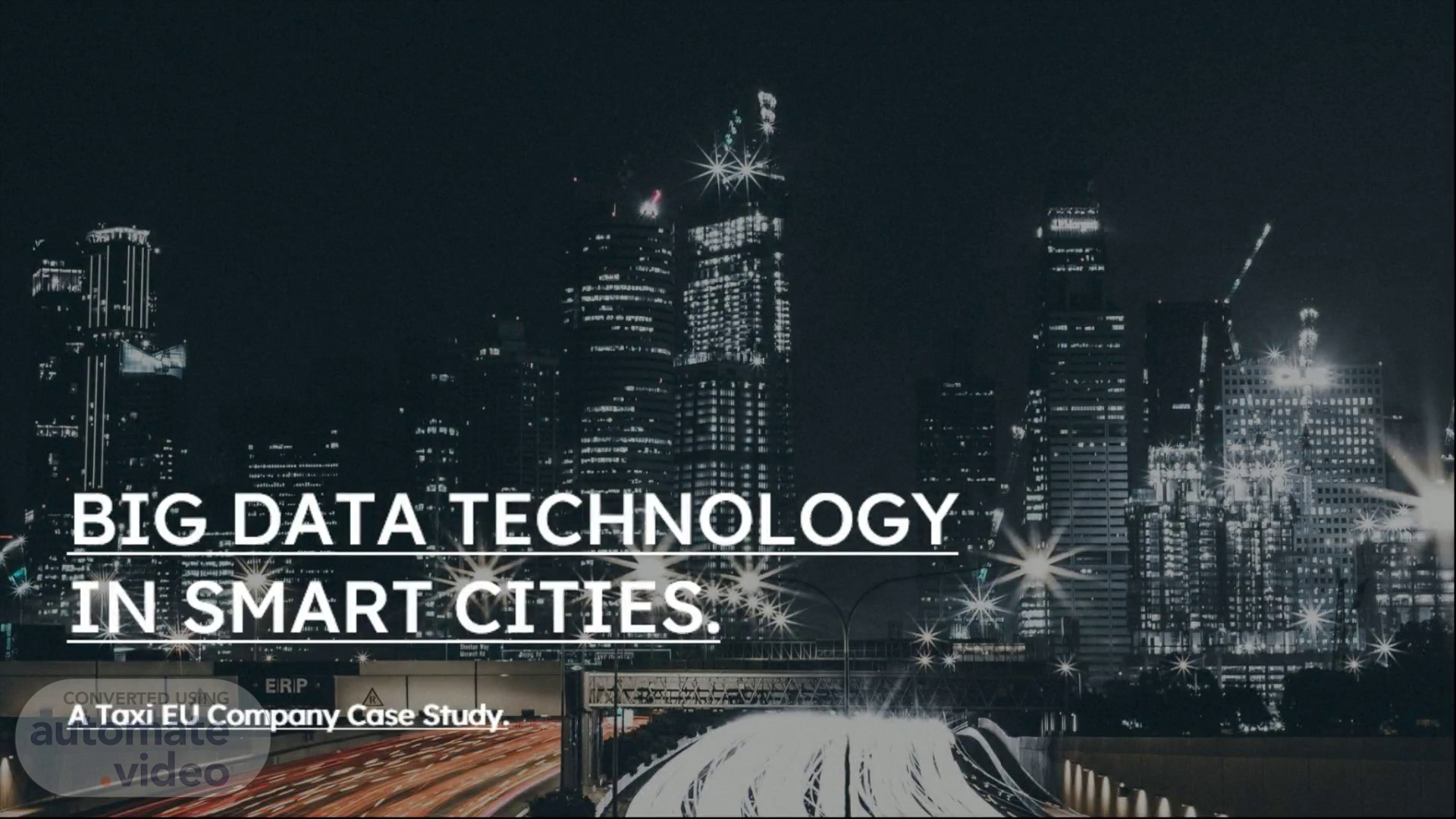
Page 1 (0s)
[Audio] BIG DATA TECHNOLOGY IN SMART CITIES. A Taxi EU Company Case Study..
Page 2 (9s)
[Audio] What is Big Data? Big data refers to massive data sets with large, varied, and complex structures that are difficult to store, analyze, and visualize for subsequent processes or results..
Page 3 (27s)
[Audio] R Programming Language: serves as an interface to other software developed in compiled languages such as C, C++, and Fortran and to give the user an interactive tool to analyze data. SQL: extracting data from databases in traditional data warehouses and big data technologies. Statistical modeling: supervised and unsupervised classification or regression problems. Machine learning: pattern recognition, computer vision, speech recognition, text analytics, statistics and mathematical optimization. Applications include: development of search engines, spam filtering, Optical Character Recognition ( OCR) among others..
Page 4 (1m 19s)
[Audio] Data Understanding − initial data collection, getting familiar with the data, identify data quality problems, discover first insights into the data, detect interesting subsets to form hypotheses for hidden information. Business Understanding − This initial phase focuses on understanding the project objectives and requirements from a business perspective, and then converting this knowledge into a data mining problem definition. Modeling − In this phase, various modeling techniques are selected and applied and their parameters are calibrated to optimal values Deployment- generating a report or as complex as implementing a repeatable data scoring ( e.g. segment allocation) or data mining process..
Page 5 (2m 4s)
[Audio] Taxi.eu is a Company that enables users to find and book taxis in Europe. Users can track their car's approach in real time through GPS and calculate the costs of their rides before booking the taxi. The key features are: according to your individual wishes ( Eco, XXL, Business and many more) according to your personal time schedule (short arrival times, comfortable reservations) according to your fair taxi fare ( estimation of the taxi fare before departure).
Page 6 (2m 41s)
[Audio] Objectives We know the following about our system requirements: Drivers must be able to tell the service of their current location and availability on a regular basis. Passengers should have real-time visibility of all close drivers. Customers can order a ride by specifying their location and time of pickup. When a consumer wants to be picked up, nearby drivers should be alerted. Once a ride is accepted, both the driver and the consumer must be able to see each other's current location for the length of the journey. The driver completes the ride and should then be ready for another customer after the drive is completed..